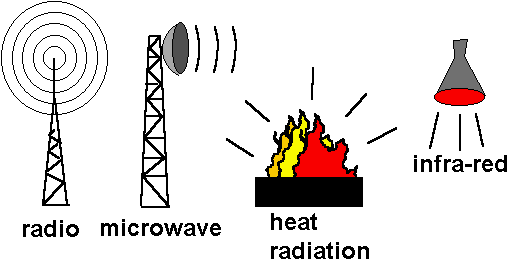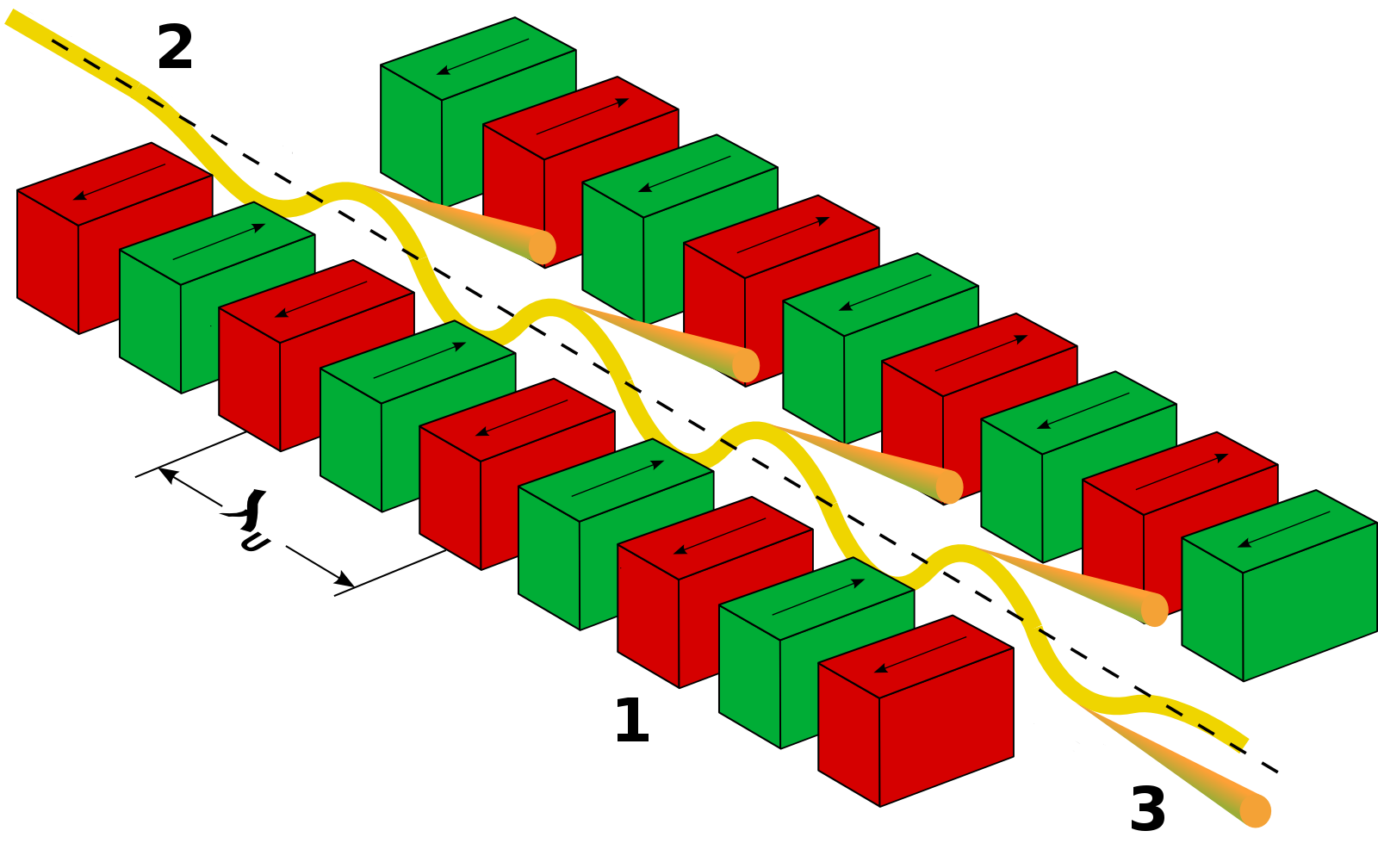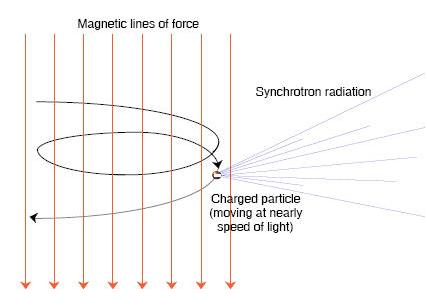Synchrotron Radiation
Synchrotron radiation is a kind of electromagnetic radiation caused by the high energy particles (with a velocity close to the speed of light). Radiation is very common in daily life, by which the light, heat, sound and many other electromagnetic waves transmitted to all directions from the source, as shown in Fig. 1 [1]. Here the synchrotron radiation will be introduced in details.

Fig. 1 Radiations of the electromagnetic waves
1. What is the synchrotron?
F=qv×B Circular motion of the electrons caused by magnetic field
a=Eq/m Acceleration of the electrons caused by electric field
Where F is the Lorentz force in the direction perpendicular to the particle velocity v and the magnetic field B, a is the acceleration of the particles under the electric field of E, m and q is the mass and the charge of the particle, respectively.
Before the introduction of the synchrotron, I would like to illustrate the mechanism of the cyclotron. Figure 2 shows the schematic diagram of the classic cyclotron [2], in which the electrons are accelerated in an alternating electric field with a certain frequency, and rotated in a uniform magnetic field. The frequency of the alternating electric field is the same as that of the circle motion of the electrons in the magnetic field, thus the electrons can be accelerated every time when they go through the electric field region. The electrons have a trajectory as shown in Fig. 2. Clearly the energy of the accelerated electrons is confined by the diameter of the vacuum chamber.
Fig. 2 The schematic diagram of a cyclotron
If we change the frequency of the electric field or the magnetic field during the accelerate process, it is the synchro-cyclotron, and if both the magnetic field and electric field are changed, it is synchrotron, as shown in Fig. 3 [3]. In this facility, the magnetic field and the electric field are synchronized carefully with the particle beam travelling in the storage ring by the insertion devices.

Fig. 3The schematic diagram for the synchrotron

Fig. 4 The structure of undulator for synchrotron:
1 magnets; 2 electron beam; 3 synchrotron radiation
2. What is the synchrotron radiation?

Fig. 5 Synchrotron radiation
At the beginning, the synchrotron radiation was a weak point of synchrotron as it consumes the energy of accelerated electrons and thus it is not welcomed by high energy physics. Then people found that it can be used as the light source with excellent properties. Thus many applications of the synchrotron radiation developed with the synchrotron. Firstly we will discuss the excellent properties of the synchrotron radiation.
3. Why is synchrotron radiation?
The excellent properties of synchrotron radiation will be discussed in this part. As a light source, it can produce high brightness, wide wavelength spectrum, collimated, pulsed and linearly polarized electromagnetic beam, as the emission of synchrotron radiation is from high energy electron beam [6].
High brightness: synchrotron radiation is a high intensity light source which can be hundred billions times of the brightness of other light source.
Wide wavelength spectrum: the wavelength of the synchrotron radiation can be controlled by the Doppler factor and the magnetic field, thus special wavelengths of light can be produced according to the applications.
High collimation: the light beam from synchrotron radiation is concentrated in a narrow cone with a very small angle, along the direction of the electron motion. Its collimation can be compared with laser.
Pulse light source: the light from synchrotron radiation is pulsed light, and the pulse interval is adjustable to special applications, from 10-11 to 10-8 s.
High polarization: the light emitted from the reflected magnet is high polarized and different polarization states can be obtained by controlling the insertion devices.
The high purity, high stability and the narrow light beam are also special properties of the synchrotron radiation.
4. Applications
As its special properties, synchrotron radiation becomes an advanced tool for research and applications in many fields. It can be used in life science to observe the structure changes of biology molecule, and material scientists used it to investigate the structure of the atoms. It can also been used to imaging the 3D structures of molecule or protein crystals. In a word, as a light source synchrotron radiation is widely used in today’s society with excellent properties.
References
[1] http://www.people.vcu.edu/~rgowdy/mod/100/xmp.htm
[2]http://www.britannica.com/EBchecked/topic-art/445045/59811/Schematic-diagram-of-a-synchrotron-with-alternating-gradient-focusing-Particles
[3] http://www.werc.or.jp/english/reseadeve/activities/accelerator/accelerator/synchro/index.htm
[4] http://en.wikipedia.org/wiki/Undulator
[5] http://astronomyonline.org/Science/RadioAstronomy.asp
[6] http://www.hudong.com/wiki/%E5%90%8C%E6%AD%A5%E8%BE%90%E5%B0%84%E5%85%89%E6%BA%90






Comments